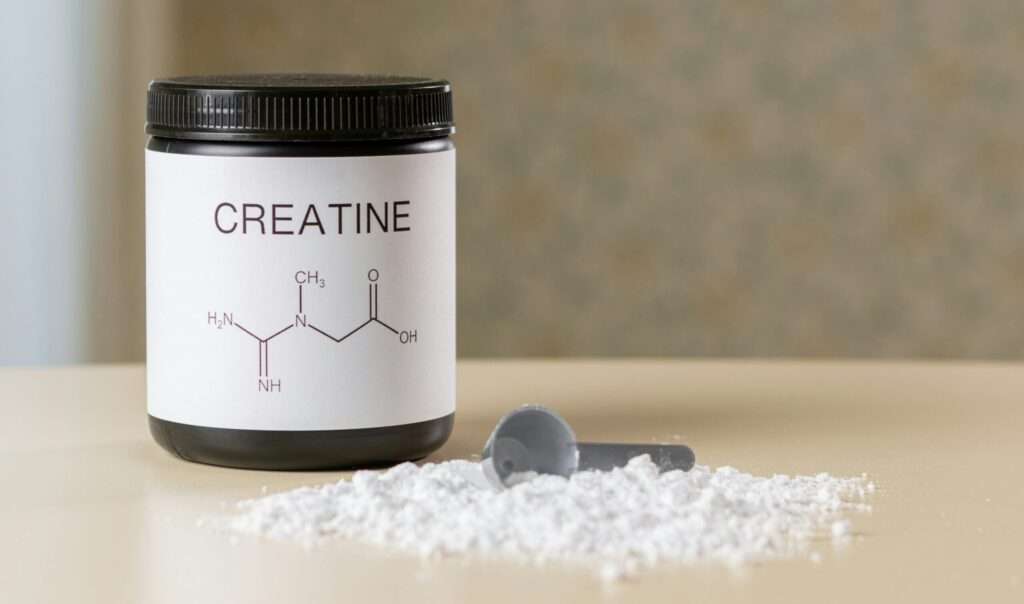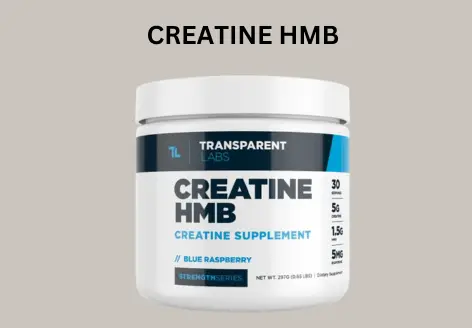Creatine is a popular supplement that is used to improve strength and performance. Some people use a ‘loading phase’ to achieve faster results. In this article, we’ll explain what the creatine loading phase is, how it works, and if it’s something you need to do.
Table of Contents
ToggleWhat is the Creatine Loading Phase?
The creatine loading phase is a strategic supplementation method for quickly saturating muscles. This initial period involves taking a higher dosage of creatine for a short amount of time, followed by a maintenance phase where a smaller, regular dose is taken.
- Enhances muscle growth and strength
- Improves exercise performance
- Supports high-intensity activities
- Helps in muscle recovery
- Pure, high-quality creatine to fuel muscles and boost endurance.
How Does the Creatine Loading Phase Work?

When you begin to take creatine, your body requires time to build up its stores. By implementing a loading phase, you’re essentially flooding your muscles with creatine much quicker than if you were to take a standard dose from the onset.
Typical Loading Protocol:
- Duration: Usually lasts about 5 to 7 days.
- Dosage: Generally, the recommendation is to take around 20 grams of creatine per day, divided into 4 doses of 5 grams each.
After completing the loading phase, the maintenance phase usually involves taking around 3 to 5 grams of creatine daily. This helps maintain elevated muscle creatine levels without the excessive dosing initially employed.
Benefits of the Creatine Loading Phase

While the loading phase can be debated among experts, it does present several benefits:
1. Rapid Muscle Saturation
The primary advantage of the loading phase is the swift increase in muscle creatine levels. When muscles are saturated with creatine, your body can utilize it effectively during high-intensity workouts.
2. Enhanced Performance
After a successful loading phase, many users report noticeable improvements in performance, including increased strength, improved training volume, and better recovery times. These benefits are particularly valuable for athletes engaging in short bursts of high-intensity exercise, such as weightlifting and sprinting.
3. Shortened Time to Results
For individuals eager to see results quickly — whether it be ahead of the competition or in preparation for an event — the loading phase compresses the time needed to experience the benefits of creatine.
Is the Loading Phase Necessary?

While loading can offer rapid benefits, it may not be essential for everyone. It largely depends on your goals, training routine, and how your body responds to creatine.
Considerations for Skipping the Loading Phase
- Limited Training Frequency: If you’re training casually or only a couple of times a week, a loading phase may not be necessary.
- Tolerance Levels: Some individuals experience digestive discomfort with higher doses of creatine. If this is the case, gradually increasing a maintenance dose can be more suitable.
Alternative Approaches
Skipping the loading phase is not a bad decision. Some individuals opt to start with a lower maintenance dose of around 3 to 5 grams per day from the beginning. While it may take longer to see the effects — typically around 3 to 4 weeks — the results can still be significant over time.
Potential Side Effects

As with any supplement, there can be side effects associated with the loading phase of creatine:
- Gastrointestinal Discomfort: High doses can cause stomach upset or cramping in some individuals.
- Water Retention: Creatine pulls water into the muscle cells, which can lead to weight gain or a feeling of bloating.
Important Note: Always consult a healthcare professional or a nutritionist before starting any new supplement routine, especially if you have pre-existing conditions.
Research articles
Conclusion
The creatine loading phase can be an effective strategy for those looking to quickly increase their muscle creatine levels and enjoy enhanced performance in their workouts. However, it’s not a one-size-fits-all approach. Evaluating your personal goals, training frequency, and individual response to creatine will help you decide whether to implement the loading phase.
For those who choose to embark on this path, remember to stay hydrated and monitor your body’s responses. Whether you load or go straight to maintenance, creatine can be a powerful ally in your fitness journey, offering numerous benefits that could elevate your training to new heights.
If you’re considering adding creatine to your regimen, share your experiences below. Have you tried the loading phase? What were your results?

